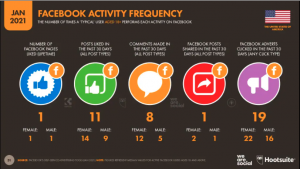If your blog exists in a narrowly defined niche or, is older than most, you will find it extremely difficult to come up with fresh topics every week. Forcing yourself to write about the same things over and over again will lead to frustration, unoriginal content, or worse, writer’s block. Sure, writing on other platforms such as medium.com will help you attract more traffic, but there is a better way to prevent your blog from gathering dust.
Recycle Old Content!
I’m sure you have several evergreen articles that received a decent number of visitors and social signals, but right now they’re only getting an odd comment or view. This happens, not because your article isn’t any good, but because Google prefers newer indexed material.
It would be a shame to let your articles sit there. Recycling can help you breathe new life on content that has already performed well in the past. As a matter of fact, Twitter accounts with more than 100.000 followers constantly share recycled material, and some of the best bloggers in the world have integrated content recycling into their content strategy.
“You don’t have to create content day in and day out. You just have to work on getting the content you already have in the hands of more people.” – Derek Halpern, Social Triggers
Benefits Of Recycling Old Content
Content recycling or repurposing is something you should consider at the outset of any given content marketing campaign. I strongly recommend that you focus on creating ‘pillar content’ and evergreen articles.
Still not sure if you should take on the challenge of recycling old posts? Below are a few benefits that might convince you it’s a worth-wile investment:
- It’s good for SEO. Revisiting old articles will give you the opportunity to enhance your meta-information and keyword distribution (or unique words). Furthermore, linking to relevant pieces of content on your site will also help you boost your rankings. Lastly, changing the date of your article or adding a note (e.g. Updated on January 28), will let Google know that you’ve added fresh information to the article. A case-study conducted by Moz revealed that faking blog freshness can lead to a significant boost in traffic.
- It will improve your blog. Blogging has changed significantly over the last couple of years. Some of your older articles are probably not that great. Simply adding a few images, gifs, internal links, infographics or videos and reformatting the text will make your articles more user-friendly and attractive.
- It will spare you from writer’s block. As I already mentioned, writing original content every week can be extremely stressful. Older articles will provide you with a solid foundation that you can build upon and improve.
- It will increase retention & impact. It’s important to send the same message through multiple mediums. This will validate you as an expert and strengthen your relationship with readers.
How To Recycle Old Content
The first thing you need to do is to find content that is worth repurposing. In other words, evergreen content. The two major qualities of evergreen content are quality (relevant) and timelessness (traffic). In other words, you have to review the most popular posts on your blog that already meet the second criterion and improve them to make them high-quality. But how do you do this, exactly?
Here are 5 effective strategies for recycling old content:
1. Create New Articles From Old Ones
Some of the best things in life are spinoffs of other great things (e.g. Frasier and Cheers). The same holds true for content. One of the best ways to recycle old articles is by converting them into a new series. For example, you can take a list article and transform it into a number of individual content pieces by breaking down each item on the list. This will allow you to add more details and background information to each element and rank for multiple keywords.
Of course, not all list articles can lend themselves to this method, so there are a few things you need to consider:
The reverse also works. You can take a group of 3, 5, 8, 10 related items and combine them into a master-list for quick reads. This will make it easier for readers to find the information that they are interested in.
2. Write A Part Two Follow-up
Identify an article that performed extremely well in the past and extend its life by creating a part two follow-up. For example, if you wrote the beginner’s guide to on-site SEO, maybe a part two with the beginner’s guide to off-site SEO would benefit your readers. Make sure your article is extremely informative and eye-pleasing.
When applying this tactic, I recommend using the original title of the article + “part 2”. This will let readers know that you have covered the topic in detail and will draw attention to your original article (as long as you have a link back to it). Give your readers a clear reference at the beginning of the article (e.g. “We have already covered the basics of on-site SEO in part one of the tutorial. See the original post, here.”)
3. Turn Your Best Articles Into Infographics
Graphics, especially Infographics, represent a great way to break down a data-heavy blog post into a visually-attractive and highly-shareable piece of content. They are also a great way to generate high-quality links. According to a recent study, websites that publish infographics on a regular basis have 12% more traffic than those that don’t.
4. Revisit, Refresh And Rewrite Old Articles
The nature of online articles means that older ones are quickly forgotten, while fresh ones are preferred by search engines. This means that, with time, some of your best posts will disappear from the archives never to be seen again. Instead of giving up on long forgotten content you can refresh, revisit or rewrite it to breathe new life onto it.
New facts, information, studies or resources can help you tell your story better and attract more visitors. You can even change the headline of the article if you feel that it isn’t the best representation of your content. Just don’t change the URL, as it will generate a broken link.
Here are a few examples of brilliant articles that performed so well in the past that they received visual improvements:
5. Transform Articles Into SlideShare Presentations Or Ebooks
Meaningful quotes, interesting statistics and actionable advice make for great slides. Take your most successful blog-posts and transform them into SlideShare presentations. Because SlideShare has a huge, growing community, you will expose your articles to potential customers and viewers. The secret to creating successful presentations lies in mixing well-chosen imagery with informative content.
Pro Tip: If you want to submit infographics to SlideShare make sure to save them as one-page PDFs before uploading them.
Alternatively, you can expand your existing content into an ebook. Did you know that some of the most successful ebooks started out as blog-posts? For example, a large number of SmashingMagazine’s ebooks owe their content to articles. Needless to say, you will have to supplement your blog posts with additional information to make the eBook worth your readers’ time. Use the finished product to attract more subscribers by offering it as a free resource.
Other Ways To Recycle Old Content
There are other ways in which you can recycle and update old articles. Here are some of them:
- Turn your blog-post into a podcast topic. Copyblogger is the prime example of content marketing done right through podcasts. If you have a loyal audience you should definitely consider transforming your articles into podcast topics. (e.g. interview an expert that shares your opinions, discuss other perspectives, answer visitor questions etc.)
- Turn old article content into quote tweets and link them to the post. This will help you drive more visitors to your site.
- Create a FAQ page from old articles. Your readers probably have little time and a ton of questions. Instead of creating a FAQ article from scratch you can create a short blurb from older articles that answers the most important questions.
- Add an “Old Posts” or “Popular Posts” section to your blog.
- Craft a Daily/Weekly Email Series. Some articles lend themselves to bite-sized chunks which can be mailed to readers through daily/weekly series. Take this article as an example. Each of the points mentioned above can be sent to readers via email.
- Repost your content on Quora. This social answers forum makes it extremely easy for you to repurpose old content.
- Promote older articles on social networks such as Facebook, LinkedIn, Google+, Twitter or Facebook.
- Republish guest posts on your own blogs.
Hand-Picked Related Articles:
- Old Content, New Heat: How To Warm Your Blog With Aged Content
- What This 15-Year Old Scary Movie Teaches You About Content Marketing
- Content Re-packaging: How To Finally Make Your Content Strategy Work
Image Sources: Depositphotos.com, FreePik.com
(101)












